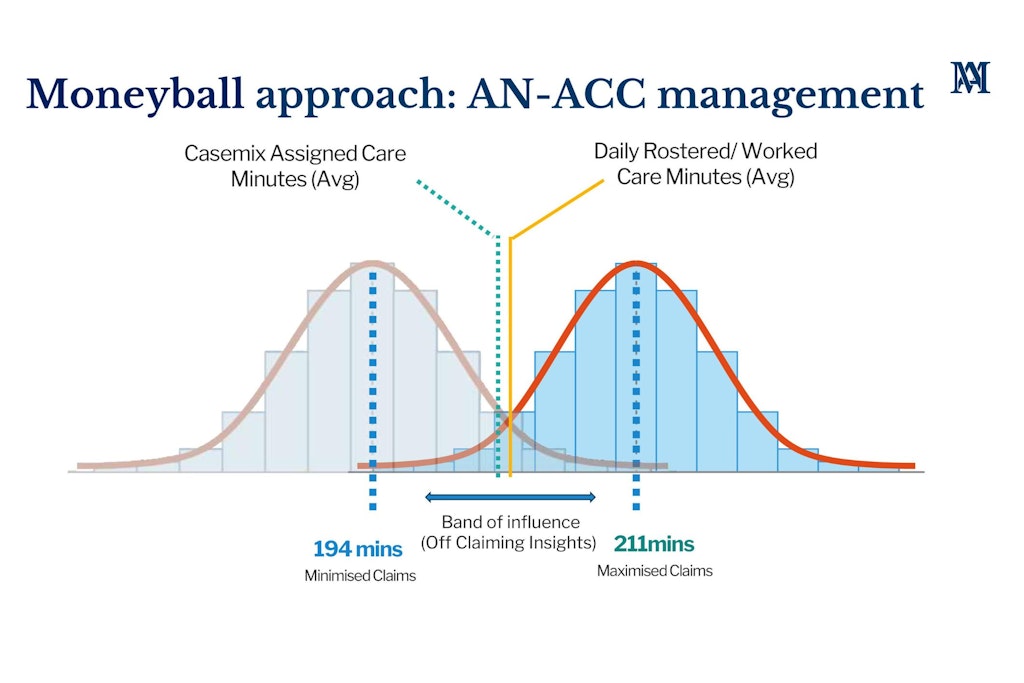Is the AN-ACC price hike a sustainable solution for providers?
Last updated on 6 December 2023

Aged care providers are receiving another major funding boost after the Government announced an additional $2.1 billion investment to increase the Australian National Aged Care Classification (AN-ACC) price from December 1.
While this is undeniably another much-needed cash influx, providers should ensure their AN-ACC strategy is sustainable and effective. Mirus Australia explored this exact topic last week in their webinar How data & analytics are enhancing aged care, where they provided important insights and examples of how providers are approaching AN-ACC.
Key points: Government’s AN-ACC investment
- AN-ACC replaced the Aged Care Funding Instrument (ACFI) in September 2022
- The Federal Government’s latest $2.194 billion investment adds to the $11.3 billion announced in the May Federal Budget, with the money funding the 15% aged care pay rise through the AN-ACC price
- As of December 1, 2023, the AN-ACC price is $253.82, nearly $40 more than the initial price when the funding model was implemented last year
Data, analytics and the Moneyball approach
Before the webinar, Mirus revealed that just one-third of providers feel completely confident about their AN-ACC management strategy. Rob Covino, Partner & Founder and Director of Mirus Australia, believes a Moneyball approach could unlock the full potential of AN-ACC management and increase provider confidence.
Moneyball comes from Major League Baseball’s Oakland Athletics. With a limited salary cap, they tapped into advanced data and analytics called sabermetrics to evaluate player performance and identify talented recruits. This helped define new performance measurements that ultimately became the norm in sports analytics.
“It does require an unconventional approach because a lot of the time we continue to focus on approaches that project the same problems and address a solution for something that doesn’t exist anymore,” Mr Covino explained.
“I still have clients asking me what should their ADS or their voluntary assessment rates be. In AN-ACC that doesn’t matter. They’re not the data points we need to lead us to sustainable and compliant operations.”
Here’s what Mr Covino identified as the key steps to implementing change.
1. Establish your care time reporting policy and data reporting measurements
Framework to collect and report role data, including hybrid roles, is essential. All eligible care minute time needs to be covered to ensure Registered Nurse and direct care minute times are achieved. Capturing and sharing the date in real-time will also make it easier to correct and alter rosters as case-mix adjusted requirements change.
“Close to 82% of clients are underreporting in some shape or form. The first step before we focus on driving more income is firstly understanding what is the available minutes and are you catching those minutes?”

2. Be in control of your data, not just report on it
Not only should providers be reporting their data but they need to be in control of it. For example, it’s not just reclassifying residents to receive increased funding, but a more balanced approach relevant to direct care time requirements and resident case mixes.
“When a manager contacts a service and says ‘We’re at 182 [care minutes] but we need to be at 179, what can you do to impact that’. That’s the next evolution of what providers are seeking to achieve… to control this data and influence decisions that will impact a period of overspend or underspend.”
3. Align your roster to your target star rating and occupancy
The gradual shift from an ACFI mindset to an AN-ACC one means some providers are still working out how to best approach their funding mechanisms. In some cases, facilities had case mix distributions that didn’t reflect their model of care.
“We need to make sure those rosters align with a star rating outcome and occupancy changes. As you move up in occupancy we need to keep an eye on that demand/ As more consumers come into our services there’s less minutes to be shared amongst our residents.”
4. Balance your business with actionable insights and scenarios
Insights are essential when rostering weeks in advance to ensure rosters align with care minute requirements and potential classification changes or admissions.
“We need to look at the scenario planning so when you sign off on expenditure and the roster for the forward-looking period you know within a strong likelihood where the facility will land with regards to the care minute achievements, star ratings and financial cost expenditure.”
Insights leading to sustainability

Mirus’ webinar provided a detailed overview of how providers can use data to achieve best practice outcomes with the resources they have on offer. Tyler Fisher, Senior Manager Data and Analytics, shared some real word examples – as highlighted in the graphic above.
He explained how the legislated care minutes have added a layer of complexity to clinical rostering with resident movement and changing care needs often resulting in mismatched rosters and claiming. This is where actionable insights and ‘what if’ scenario planning can make all the difference to AN-ACC management.
“We want to align resident claims with the actual care needs but really the importance to the business is aligning a claim profile to the current roster. To do that we have to use data effectively,” said Mr Fisher.
“Identifying those reclassifications and documenting them accurately. Tracking how well we forecast outcomes helps to fine-tune the process, the care roster and match changing requirements with known classifications. You’re seeing the cause and effect and then reacting to bring it back to a point of compliance within your means.
This ongoing analysis of the claim profile ensures we are getting optimal care delivery while being compliant and sustainable,” he added.